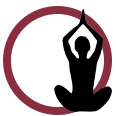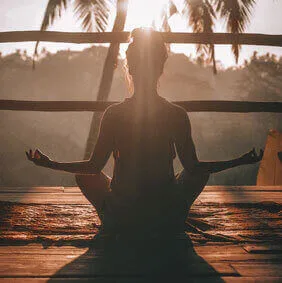
Yoga formed thousands of years ago across India, although the exact origins are unknown. Yoga is for every person in every age; therefore, Yoga keeps changing just as time keeps passing. What ancient yogis did many years ago in dark caves may not be exactly what we do today, and that’s o.k. What is significant is that there is still the essence of Yoga there.
Yoga is NOT a religion; rather, it is a discipline, one that leads to ultimate freedom.
The term “Yoga Sutra,” an Indian sage Patanjali’s 2,000-year-old treatise which is written on yogic philosophy. It helps you understand how to master the mind, control the emotions, and develop in spirit written on a guidebook. Yoga Sutras are the earliest written theory of Yoga, and one of the oldest texts in history, providing the basis for all modern Yoga.
Yoga is based on different postures and poses, but it wasn’t a crucial part of India’s original Yoga practices. A primary objective was not fitness. Instead, practitioners and adherents of yogic tradition focused on other practices, such as spreading spiritual energy through methods of breathing and mental concentration.
There are six main branches of Yoga. Each “branch” represents a different focus and set of characteristics.
This Yoga style is Known for the physical and mental branch primarily designed for the body and mind.
known for the establishment for devotion path, teaches us a positive way to channel emotions and cultivate acceptance and tolerance.

This Yoga style is Known for meditation and strict adherence to a series of disciplinary steps known as the "eight limbs" of Yoga.
This Yoga is known for the path of wisdom, the scholar, and managing the intellect in studies.


This is a service path used to create a future free from negativity and selfishness.
This is known for the pathway of ritual, ceremony, or consummation of a relationship.

The word “chakra” literally means the spinning wheel.
Yoga believes that chakras are the centrepieces of life, emotions, feelings, and the body. According to yogic teachers, the chakras decide how people perceive reality through emotional responses, desires or aversions, levels of trust or fear, and even physical signs and effects.
When energy becomes blocked in a chakra, physical, mental, or emotional imbalances are said to cause symptoms such as anxiety, lethargy, or poor digestion.
There are seven major chakras used in Yoga. Each Chakra focuses its own ritual and rules:
Sahasrara: The “thousand-petaled” or “crown” Chakra presents the state of pure consciousness. This Chakra is located at the head’s crown, and the color white or violet represents it. Sahasrara is all about inner wisdom and physical death.
Ajna: This is “command” or “third-eye chakra.” It is a midpoint between two important energetic streams in the body. Ajna represents the colors violet, indigo, or deep blue. But the traditional yogis described it as white. The Ajna chakra is the focus of the pituitary gland, which helps in growth and development.
Vishuddha: This Chakra is known as “especially pure” or “throat” Chakra. This represents color red or blue. This Chakra is known as the home of speech, hearing, and metabolism.
Anahata: The “unstruck” or “heart” chakra. It relates to the colors green and pink. Anahata’s key issues include complex emotions, compassion, tenderness, unconditional love, equilibrium, rejection, and well-being.
Manipura: “jewel city” or “navel” chakra represents with yellow color. Yoga master connects this Chakra with the digestive system. It also represents personal power, fear, anxiety, developing opinions, and tendencies towards an introverted personality.
Svadhishthana: Masters depict the “one’s own base” or “pelvic” Chakra. This is known for the reproductive organs, the genitourinary system, and the adrenal gland.
Muladhara: This represents “root support” or “root chakra” is at the base of the coccygeal region’s spine. This is known for our natural urges relating to food, sleep, sex, and survival and the source of avoidance and fear.
Yoga’s Yoga styles are described in books, and every style represents its own authenticity and focuses point. What you want to choose totally depends on your requirements.
















Derived from the Sanskrit word yuj, Yoga means union of the individual consciousness or soul with the Universal Consciousness or Spirit.

Wellness Coach

Meditation is a practice where an individual uses a technique – such as mindfulness or focusing their mind on a particular object.

Wellness Coach

Acupressure is an alternative medicine technique similar in principle to acupuncture.

Wellness Coach

The coaching process addresses specific personal projects, business successes, general conditions and transitions

Wellness Coach

Infinite Wellness is the EPICENTRE to transform you physically, mentally and spiritually into a Complete New Personality you’ve always dreamt to be.
Join us for an exclusive 3-night, 4-day Wellness Retreat at the breathtaking Divine Resorts.